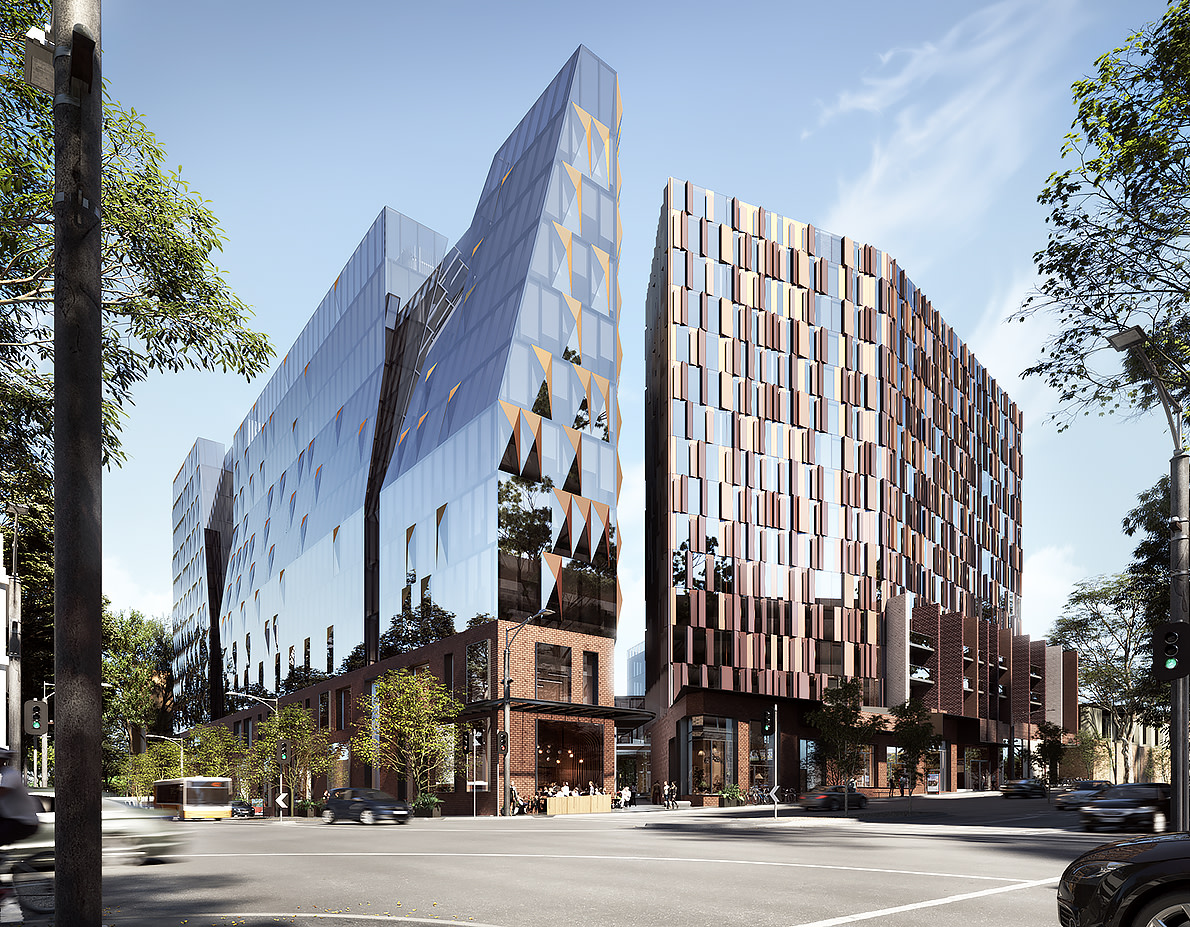Further details of Hayball's design for Carlton Connect emerge
Further details for Hayball's latest student accommodation project, which will form part of the University of Melbourne’s Carlton Connect innovation precinct, have been released.
Located on the corner of Swanston and Grattan streets in Carlton, the new precinct will be a completely integrated development providing spaces for industry, research and development, academia, accommodation for postgraduates, a public showcase and community facilities such as childcare and retail.
As part of the Lendlease-led consortium delivering the project, Urbanest Australia will operate the on-campus student accommodation component of the development, its first foray into campus housing.
The Hayball designed project will be centrally located, forming the heart of the precinct, and will deliver 527 beds and extensive multi-purpose spaces to cater to the postgraduate market as well as visiting academics.
Innovation districts are becoming more popular across the globe, but what makes this Melbourne example so special is that it will also be a home for students and academics. Postgraduate students and visiting academics will experience true immersion in the precinct, living and breathing their research or studies while making the most of countless networking opportunities and Melbourne’s vibrant culture on their doorstep.
With contribution to the design process from leading student accommodation provider, Urbanest, design decisions reflected the maturity of the provider and were made with a focus on quality and functionality, while equally ensuring relevance to market, particularly regarding affordability.
A crucial consideration was bringing the enthusiasm and activity unique to academic culture into the common spaces and use this to extend and enhance engagement.
The spatial manifestation of this initiative is the vertical street: an interconnected staircase, directly adjacent to the communal spaces, and opposite the lift core. No walls, no glazed partitions and no doors – a true atrium, open, connected and inclusive.
- Thomas Gilbert, Hayball Principal
The basis for Hayball's design was for space which encourages and facilitates students and academics to meet, interact, exchange views and generate ideas within a flexible, and connected precinct.
The design features an expansive mixed-use space within an atrium which is accessed via an open and transparent ground floor foyer and connects to a verdant podium terrace. The major focus of activity is centred around the external oculus space.
According to Hayball, for the current generation of students work, life and study are all intertwined. This was the key driver behind dedicating a third of the vertical street as an informal social precinct with both informal and formal multipurpose areas and outdoor terraces. The intent is that these spaces will assist students in building connections and developing a community.
A series of intimate lounges are scattered over several floors to facilitate socialising in addition to a rooftop level featuring a diner, cinema and expansive outdoor lounge/exercise area.
Urbanest Carlton Connect is one of a handful of student accommodation projects Hayball is designing, with a number of others in collaboration with the University of Melbourne within the wider precinct.
